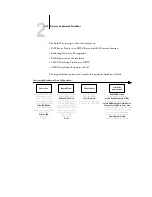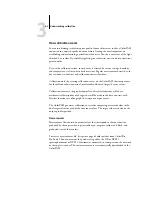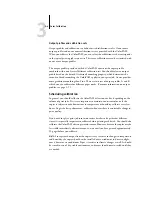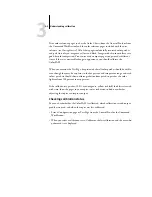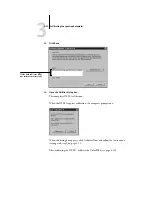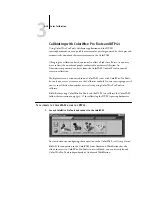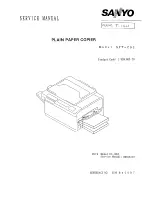
3
3-3
Understanding calibration
How calibration works
Success in obtaining satisfactory print quality from a color server such as a ColorPASS
connected to a copier depends on many factors. Among the most important are
establishing and maintaining optimal toner densities. Density is a measure of the light
absorbed by a surface. By carefully regulating toner densities, you can obtain consistent
printed color.
Even with a calibrated system, toner density is affected by service settings, humidity,
and temperature; it also tends to drift over time. Regular measurement detects day-to-
day variations in densities, and calibration corrects for them.
Calibration works by creating calibration curves on the ColorPASS that compensate
for the difference between actual (measured) and desired (target) density values.
Calibration curves are the graphic equivalent of transfer functions, which are
mathematical descriptions of changes that will be made to the data you start with.
Transfer functions are often graphed as input or output curves.
The ColorPASS generates calibration curves after comparing measured values to the
final target values for each of the four toner colors. The target values are based on the
output profile specified.
Measurements
Measurement files contain numerical values that correspond to the toner density
produced by the copier when it prints solid cyan, magenta, yellow, and black, and
graduated tints of those colors.
To create a measurement file, first print a page of color patches from ColorWise
Pro Tools. Then you measure the patches using either the X-Rite DTP41
spectrophotometer or DTP32 densitometer connected to a computer on the network
or the copier’s scanner. The new measurements are automatically downloaded to the
ColorPASS.
Summary of Contents for ColorPASS-Z5000
Page 1: ...ColorPASS Z5000 COLOR GUIDE I N C L U D E S F I E R Y S O F T W A R E ...
Page 2: ......
Page 6: ......
Page 96: ......
Page 148: ......
Page 160: ......
Page 172: ......
Page 175: ...Plate 1 Sunlight split into spectral colors by prism Plate 2 CIE chromaticity diagram ...
Page 179: ...Plate 5 Additive color model Plate 6 Color monitor ...
Page 180: ...Plate 7 Subtractive color model ...
Page 185: ...Plate 8 Color wheel Plate 9 Complements split complements and triads ...
Page 198: ......
Page 206: ......
Page 208: ......












